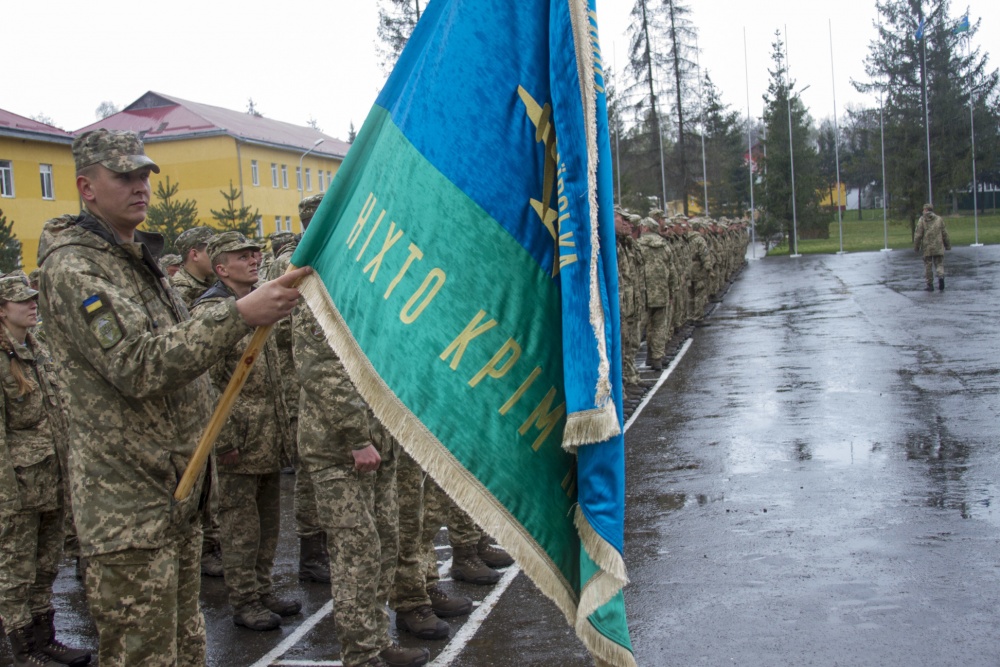
Ukraine: A Cornerstone of US Security Policy
For three and a half years, the United States has observed the violence and on-going violations of Ukraine’s sovereignty with relative ambivalence. The US, NATO alliance, and other western allies – entities that rely on the premise and emphasis of sovereign obligation and maintaining sovereign international order – have yet to interject in the conflict in a manner that will fully resolve these violations. Though signed diplomatic memoranda exist which dictate the borders and the rights of a free Ukraine, the Crimean Peninsula has been forcibly “annexed” by Russia while Ukraine’s military forces fight armed separatists in Eastern Ukraine that are funded, trained, and assisted by the Russian Federation. Ukraine represents a most immediate and integral opportunity in Russian deterrence.
Fortunately, the groundwork for bolstering Ukrainian defense already exists. Ukrainian financial and military assistance packages continue, but face a precarious future as reports circulate of sizeable cuts to the State Department’s political and economic reform efforts under the new Trump administration. It is in the ultimate strategic interests of the US and NATO to maintain their support and supplement their current military commitments to protect Ukraine, which embodies a vitally strategic buffer zone between Vladimir Putin’s ambitions of restoring Russia’s sphere of influence, and the greater reaches of the Eastern Europe, the Baltics and beyond. Russia’s ambitions of expansion will only grow stronger should the United States and NATO choose not to help Ukraine defend itself.
Following the Russian upheavals and illegal seizures in both Crimea and Eastern Ukraine, President Obama announced in June 2014 the establishment of the European Reassurance Initiative (ERI). This initiative, originally intended as a one-year, $1 billion response to the Russian provocations in Ukraine, was a substantial boost to the paltry post-Cold War numbers of US personnel, equipment, and facilities remaining in Central and Eastern Europe. Receiving strong bipartisan support, the ERI has laid the foundation for increased US and NATO training, equipping, and advisory missions and for FY17 has been authorized $3.4 billion to expand the US and NATO military presence, military stockpile prepositioning, and building partner nations’ military capacities. Within Ukraine itself, the United States and NATO allies have a limited, albeit slowly developing training system intended to train a relatively depleted Ukrainian military that has been worn down the last three years of combat.
Currently, the United States and NATO hosts two joint annual training exercises within Ukraine. SEA BREEZE, the US Navy’s annual interoperability training exercise is designed to interact and assist a Ukrainian Navy which suffered considerable losses in equipment after the swift seizures by Russia in Crimea. Comprising of approximately 1,300 personnel, RAPID TRIDENT is an exercise aimed at interoperability between US and allied ground forces and their Ukrainian counterparts. Primary tasks of RAPID TRIDENT focus on countering improvised explosive devices (CIED) and patrolling – skills well-familiar to all participants of the exercises, as the fighting in Afghanistan and Iraq can sometimes surprisingly mirror similar types of threats faced by the Ukrainian military.
The most significant investment that harbors potential for lasting success in reforming Ukraine’s military comes with the newly established training center in Yavoriv, Ukraine. Established in 2015, the Joint Multinational Training Group – Ukraine (JMTG – U) is intended to supply doctrinal and tactical training and equipping assistance to the Ukrainian armed forces until 2020. Overseeing the training and assistance for up to five Ukrainian battalions per year the limited amounts of training thus far conducted through JMTG – U has proven successful, and Ukraine’s armed forces have proven eager to progress their soldiers’ training in tactics, techniques, and procedures.
A congressional delegation made a recent visit to Yavoriv, Ukraine, the site of JMTG – U’s training center and given a tour of the training facilities and hands-on training being conducted by the multi-national forces. Rep. Mike Rogers, chairman of the House Armed Services strategic forces subcommittee, seemed to fully support the assistance efforts and on-going mission of JMTG – U: “I want people to understand how vitally important it is to American interests that we help Ukraine…. every nation on the western border of Ukraine is a NATO ally and it is in all of our best interests that Ukraine be successful in this endeavor,” said Rogers. “We, the congress in particular, fully support Ukraine”.
This type of praise by Rep. Rogers is encouraging, and should be met with sustained and amplified measures of support to Ukraine. This continued support will help deter Russia over the long-term, and will once again signal a resolve to maintaining sovereign obligations and commitments by the US and NATO alliance.





